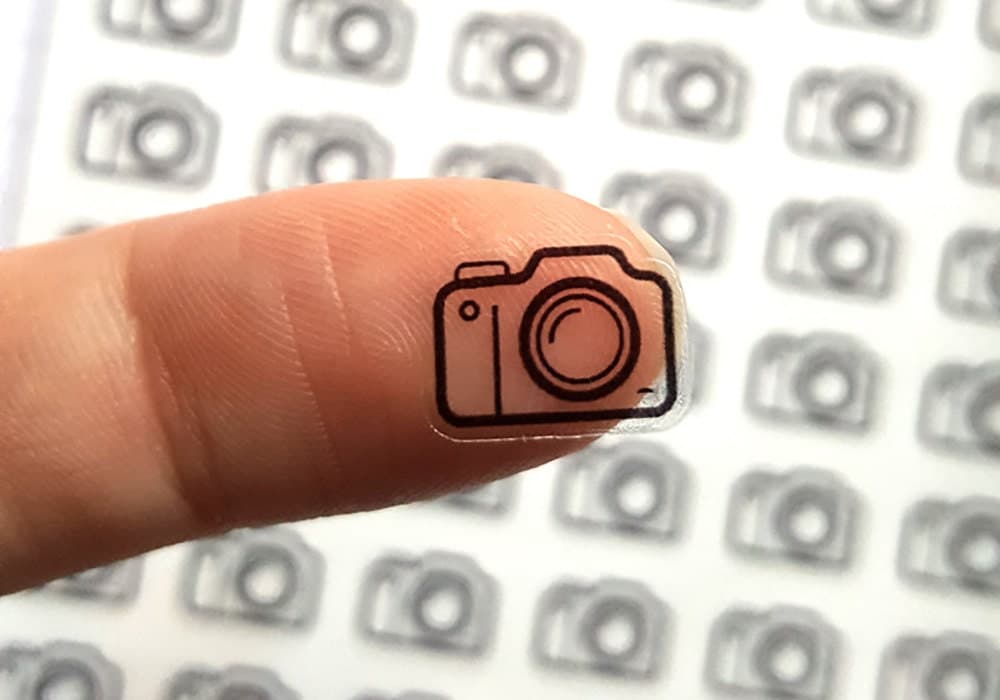We hope you've enjoyed reading our Ultimate Guide to Product Photography!
Use this checklist as a starting point for your next photo shoot. From choosing equipment to lighting your product to editing your photos, this list covers the little steps you can take to make your products look enticing to prospective customers.
❏ Schedule time for your photos: Taking photos of your products can be time-consuming, especially if you sell vintage or one-of-a-kind items—or if you have a lot of new inventory. Schedule time to shoot several items at once, to make the process as efficient as possible.
❏ Plan out your shots: Before you begin shooting, think about the different aspects of your products you’re trying to highlight, and the best way to capture them. Here are a few shots to consider:
- Studio shot (your item by itself in front of a plain backdrop)
- Detail shot (a close-up photo that highlights your product's features)
- Size and scale shot (a photo of your product that visually communicates how big—or small—it is)
- Lifestyle shot (your item looking good in its natural habitat)
- Group shot (a selection of your wares together)
❏ Gather your equipment: Depending on the kind of shot you want and the setting of your photo shoot, you may need the following:
- Camera or smartphone
- Softbox lights or light box (if shooting indoors)
- Backdrop (seamless paper or a clean wall)
- Tripod (or a sturdy surface like a stack of books, to steady the camera)
- Light reflector (or a piece of white posterboard or a piece of cardboard covered in aluminum foil, used to reflect more light onto your subject)
- Macro lens (for shooting small items and details)
- Shutter release cable or remote control (helpful if you are modeling items yourself)
- Clothespins, clear tape, or clips (to secure your backdrop or items)
- Props (to show use or scale)
❏ Set up your backdrop: Your background should complement your item and keep a shopper’s attention on your product.
- Choose simple, uncluttered backgrounds, such as white or neutral-colored seamless rolls of paper or fabric—or a clean, light-colored wall.
- If you’re using a seamless roll, extend it gently down the wall, laying it over the surface you plan to place your product on.
- Weigh the material down at the bottom, being careful not to crease or wrinkle it.
- Position your product several inches in front of where the background curves.
- If necessary, secure the background with tape or clips.
- Use one or a few consistent backgrounds for all of your products, to create a cohesive look in your online shop.
❏ Light your product: If you want a clear, beautiful shot, lighting your product well is arguably the most important thing you can do.
When shooting indoors:
- Photograph your item near a sunny window, diffusing the light with a sheer curtain.
- If needed, use a reflector to bounce additional light on your subject.
- When shooting without sunlight, use a light box or a set of three softbox lights to eliminate shadows.
- Avoid using your camera’s flash, and avoid mixing natural and artificial lighting, since they have different color tones.
When shooting outdoors:
- Photograph on overcast days.
- Avoid direct sunlight, which can wash out colors and produce harsh shadows.
❏ Steady your camera: Keeping your camera still will help make your photos sharper.
- Use a tripod to steady the camera.
- Use a remote or shutter release cable to take the shot without touching the camera.
- Take a few test photos to make sure that your product is well lit and in focus.
❏ Capture your shot: You’ve put a lot of time into your shoot. Make sure you get all the shots you need.
- Use the rule of thirds to draw the eye to your product. (Imagine the frame of your image as a grid with three vertical and three horizontal lines, and center your image at one of the points where these lines would intersect.)
- When using a smartphone, avoid zooming in on your subject, because this can reduce the quality of the image.
- If you are using props for, say, a lifestyle shot, make sure your product is the star of the photo, and it’s clear what is being sold.
- Use the macro setting or a macro lens for close-ups and to photograph small items like jewelry.
- Take photos of your product from multiple angles.
❏ Edit your photos: Editing can be tedious if you are trying to compensate for poor lighting or mistakes in the photo shoot. Ideally, you can give your photos a finishing touch with a few light edits.
- We recommend uploading photos that work for multiple crops and ratios, like square or rectangle. Because listing photos may be used across multiple pages on Etsy, the best way to ensure your photo is displayed in an optimal way is to upload photos that work for multiple ratios.
- Crop your photos to remove excess white space and focus customer attention on your product, using the rule of thirds.
- Use editing software like Aviary or Photoshop for quick touch-ups or to adjust brightness so that the colors in the photo reflect how your products look in person.
- Avoid using Instagram-type filters that alter the colors of your product.
❏ Upload your photos: Want to learn more about how to add product images on Etsy, including dimensions and cropping information? Start here.
- Listing photo dimension requirements
- Adjusting and cropping listing images
- Tips for protecting your images online
Go back > The Ultimate Guide to Product Photography
 Words by Etsy Staff
Words by Etsy Staff




